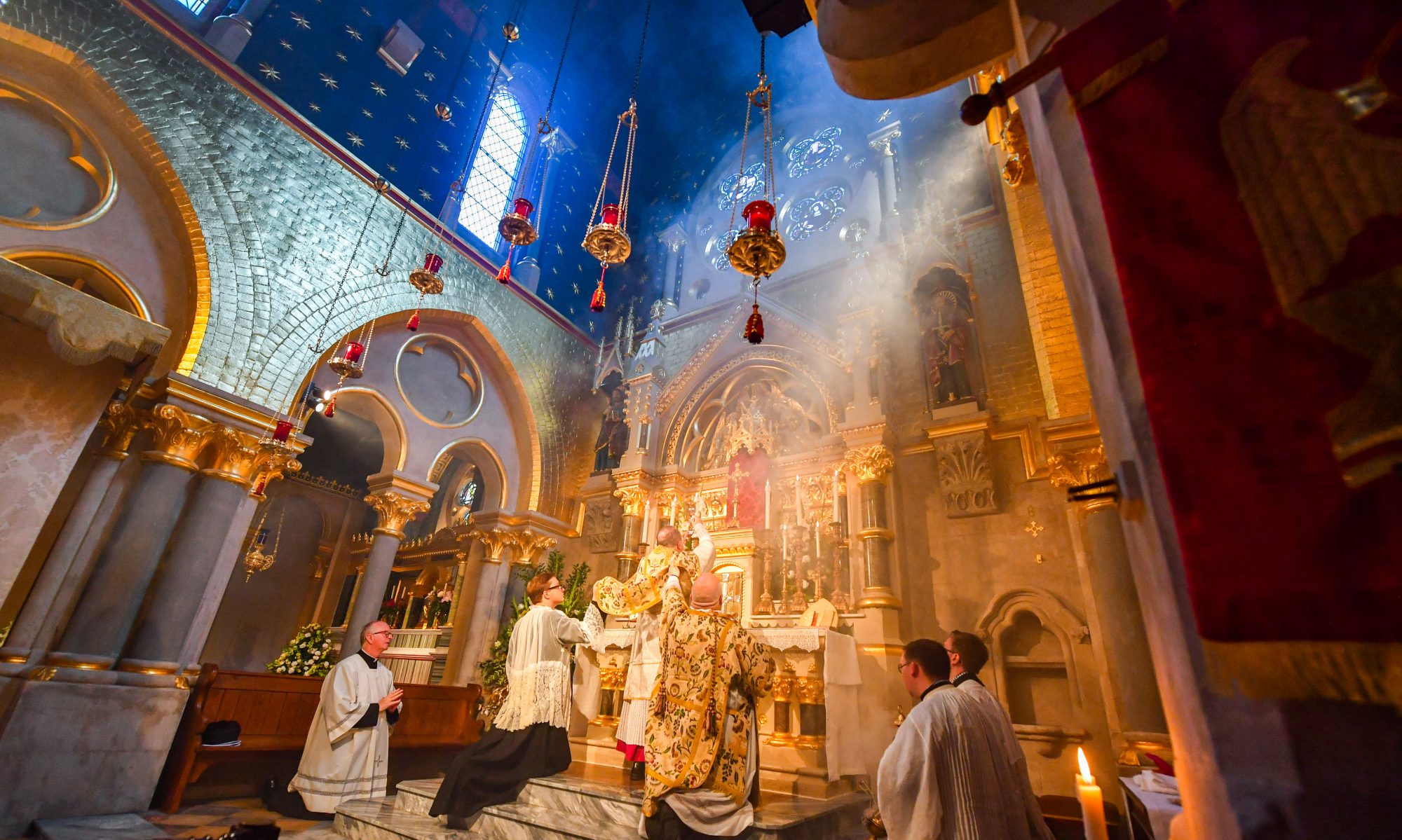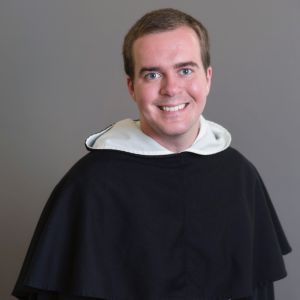
-please click on the image for greater detail
“If it’s just a symbol, then to hell with it.” -Flannery O’Connor
If you entered a vacant Catholic Church at night, you would not be in total darkness. A single burning light would guide your way.
An oil lamp or wax candle, known as the sanctuary lamp, would be continuously aglow above or near the tabernacle. It is a symbol that Christ is present.
The General Instruction to the Roman Missal (GIRM, for you acronym addicts), a guide for how to celebrate Mass, states, “In accordance with traditional custom, near the tabernacle a special lamp, fueled by oil or wax, should be kept alight to indicate and honor the presence of Christ.”
Catholics have always shown their respect for the reservation of the Eucharist in the tabernacle. The church’s guidelines for art and architecture states: The tabernacle “should be worthy of the Blessed Sacrament – beautifully designed and in harmony with the overall decor of the rest of the church. To provide for the security of the Blessed Sacrament the tabernacle should be ‘solid,’ ‘immovable,’ ‘opaque’ and ‘locked.’ The tabernacle may be situated on a fixed pillar or stand, or it may be attached to or embedded in one of the walls. A special oil lamp or a lamp with a wax candle burns continuously near the tabernacle as an indication of Christ’s presence.”
Although sanctuary lamps have been red in many traditions, church documents do not specify a color.
The Blessed Sacrament reserved in the tabernacle was originally intended for the Communion of the sick and dying and for those unable to attend the Sunday celebration. “But as the appreciation of Christ’s presence in the Eucharistic species became more developed, Christians desired through prayer to show reverence for Christ’s continuing presence in their midst,” states “Built of Living Stones: Art, Architecture and Worship,” the U.S. Conference of Catholic Bishop’s guide for worship spaces.
“In reverent prayer before the reserved Eucharist, the faithful give praise and thanksgiving to Christ for the priceless gift of redemption and for the spiritual food that sustains them in their daily lives. Here they learn to appreciate their right and responsibility to join the offering of their own lives to the perfect sacrifice of Christ during the Mass and are led to a greater recognition of Christ in themselves and in others, especially in the poor and needy. Providing a suitable place for the reservation of the Blessed Sacrament is a serious consideration in any building or renovation project,” the book continues.
The sanctuary lamp is extinguished on Good Friday when the body of Christ is removed from the main church and relit at Easter.
I see the terrifying spaces of the universe that enclose me, and I find myself attached to a corner of this vast expanse, without knowing why I am more in this place than in another, nor why this little time that is given me to live is assigned me at this point more than another out of all the eternity that has preceded me and out of all that will follow me.
—Pensees, Blaise Pascal
“A common argument against Christianity is often put like this: “The Christian way of looking at God and the universe doesn’t make any sense. Why all the wasted space? If mankind is the spiritual center of the universe, it certainly doesn’t look like it. By all observation, we seem to be the secretion of a mossy rock, flying around the backwater of an impossibly large and empty space.” This is less of a formal argument and more of a sentiment, but, all the same, it needs accounting for.
One of the great things about being Catholic, and about being human, is seeing the power that symbols have in explaining fundamental parts of our experience to us. God does not disdain to use imperfect, material things to convey transcendent truths to help us understand our place in the whole mess of things we call life this side of paradise. Thankfully, the Church in her wisdom understands this, and employs such signs all over the place. One such sign is the sanctuary lamp, or altar lamp; a little light that is often surrounded by colored glass and other ornamentation, which is always placed near the tabernacle in a Catholic Church. Why? On a very basic level, the light is on when the Master of the house is home. It’s a sign of hospitality that most people can understand easily. On another level, I think this gives us an answer to the problem we started with.
Anyone who has had the pleasure to pray in a church at night will understand what I mean. After a while, and as your eyes adjust to the darkness, you realize that the only light in the whole place comes from the altar lamp. From the sanctuary to the back of the nave, a vague semblance of shapes appear, depending on the style and architecture of the building; the high vaults of the ceiling, an organ, perhaps some stained glass, or a reredos crowned with a cross. The impression one gets, as a whole, is of an order that is shrouded in mystery. At the same time, all this is only visible by a light that signifies the presence of something, or someone, of much greater import than an ordered, but otherwise dark and mostly empty space.
In short, I don’t think that the medievals were too far off the mark when they likened the cosmos to a church. Why is the universe so full of empty space? Why are Catholic churches so full of empty space? The end of all creation is the end of all worship: to manifest the glory of God. When God spoke to Job out of the whirlwind, he said as much:
Where were you when I laid the earth’s foundation? Tell me, if you understand. Who determined its measurements—surely you know! Or who stretched the line upon it? On what were its bases sunk, or who laid its cornerstone, while the morning stars sang together and all the angels shouted for joy? (Jb 38:4-7)
If the empty space of the church is where the faithful sing the praises of God, what is the expanse of the universe but a church for the angels to sing? And what, then, is Earth, and the Church upon it, but an altar lamp announcing the presence of God in his creation?”
“Take note of those who hold heterodox opinions on the grace of Jesus Christ which has come to us, and see how contrary their opinions are to the mind of God. . . . They abstain from the Eucharist and from prayer because they do not confess that the Eucharist is the flesh of our Savior Jesus Christ. . . . They who deny the gift of God are perishing in their disputes.” –St Ignatius of Antioch (Letter to the Smyrnaeans 6:2-7:1 [A.D. 110]).
“We call this food Eucharist. . . . For not as common bread nor common drink do we receive these; but since Jesus Christ our Savior was made incarnate by the word of God and had both flesh and blood for our salvation, so too, as we have been taught, the food which has been made into the Eucharist by the eucharistic prayer set down by him, and by the change of which our blood and flesh is nurtured, is both the flesh and the blood of that incarnated Jesus.” –St Justin Maryr (First Apology 66 [A.D. 151]).
Love,
Matthew

